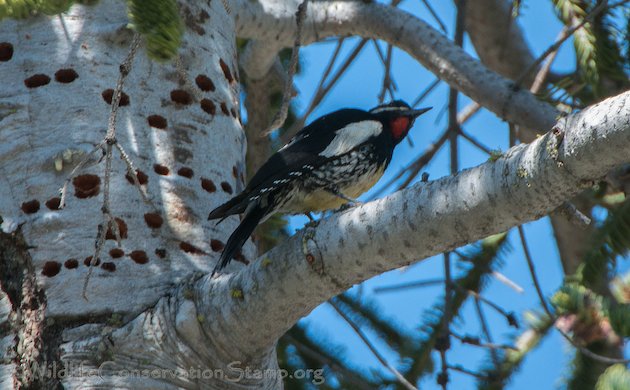
Last weekend was our Audubon chapter’s annual campout at Lassen Volcanic National Park. I guess if you clicked on any of the links in the previous sentence you know how much I enjoy that park!
This weekend I saw something I had never seen before. A pair of Williamson’s Sapsuckers (Sphyrapicus thyroideus) nesting in the same snag as a Douglas Squirrel! Their nest entrances were actually about three feet apart! Note the baby squirrel sticking its head out at the top of this photo. Click on photos for full sized images.
When I first approached the nest tree I saw an adult squirrel climbing the snag near the sapsucker entrance and, knowing that squirrels will eat bird eggs and nestlings, I was quite concerned.
Those concerns were quickly squelched as I watched the female sapsucker dive bomb that mama squirrel as it scurried down the snag and out of sight. It was only much later that I discovered that the squirrel was there because it was her house too.
This is the young squirrel venturing out of its nest for a brief moment while the sapsucker adults were away.
The female Williamson’s Sapsucker was doing most of the feeding, bringing in beaks full of ants to the young ones.
Williamson’s Sapsuckers have the highest dependence on ants of any North American woodpecker1. They are omnivorous with high seasonal specialization, feeding exclusively on conifer sap and phloem during the pre-nestling period and shifting to mainly ants after their young hatch.
Unlike all other woodpeckers, the Williamson’s Sapsucker exhibits spectacular sexual differences in plumage. The female seen above with a predominately brownish head and heavily barred wings, flanks and upper parts, contrasts markedly from the male, seen here at their sap wells in a nearby tree.
The male also contributed to the feeding of the young…
and the female occasionally stopped at the sap wells, I imagine for an energy boost.
Here is a shot of a male nestling sticking its head out of the entrance hole.
I shot this video of the adults feeding the nestling which was popping his head out the entrance and looking around quite a bit, making me think that they were very close to fledging.
httpv://m.youtube.com/watch?v=9kwuBe3Z6sY
References: 1Birds of North America Online


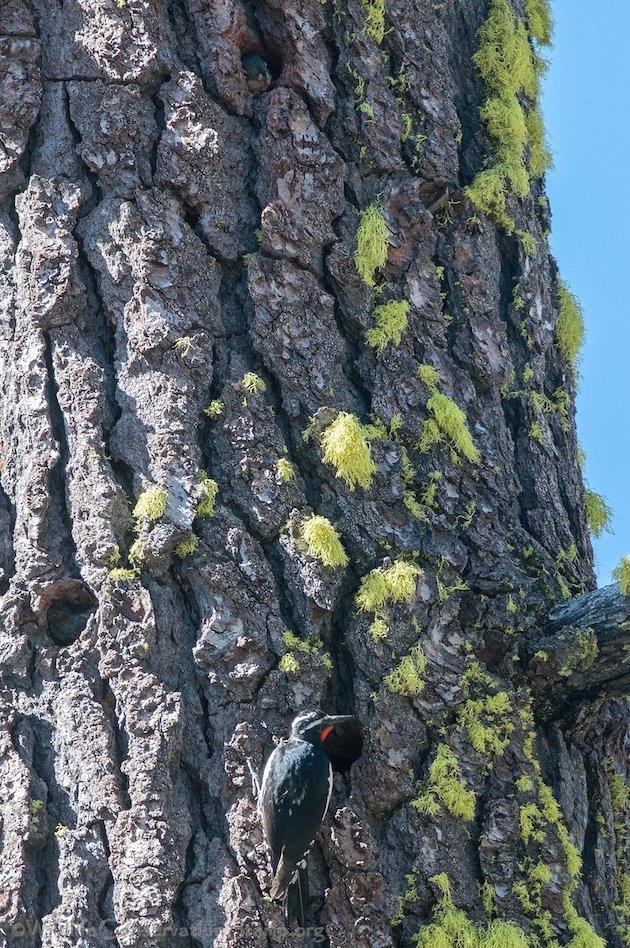
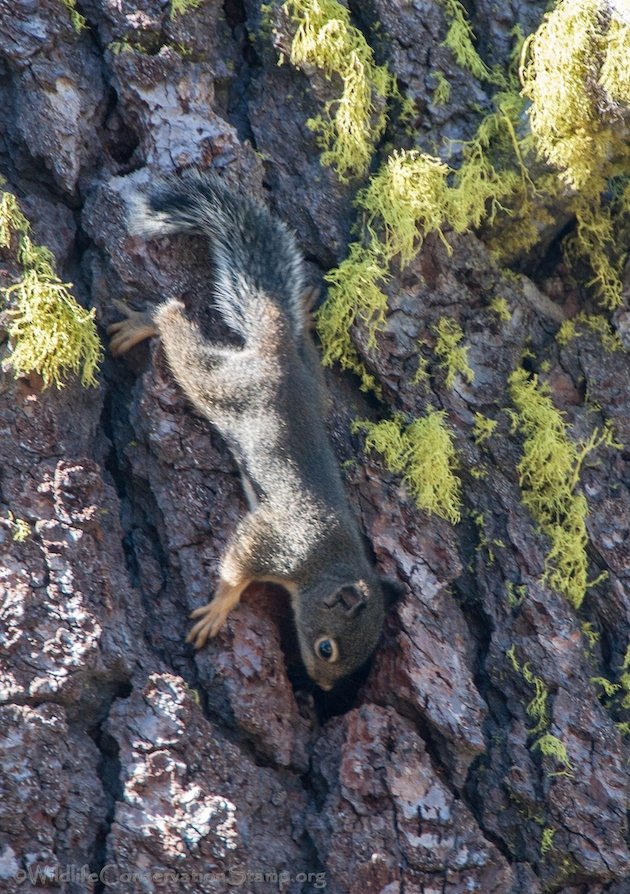
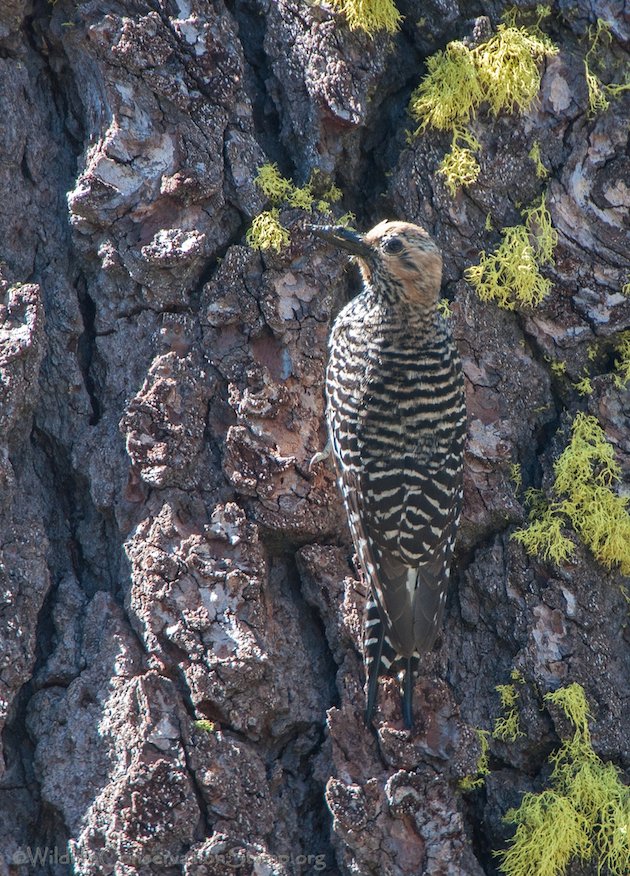
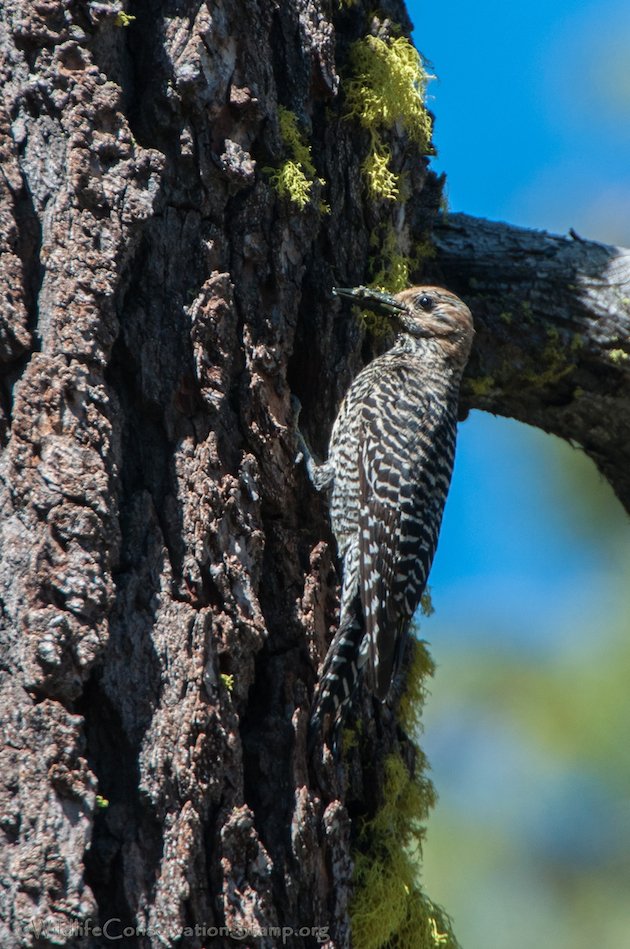
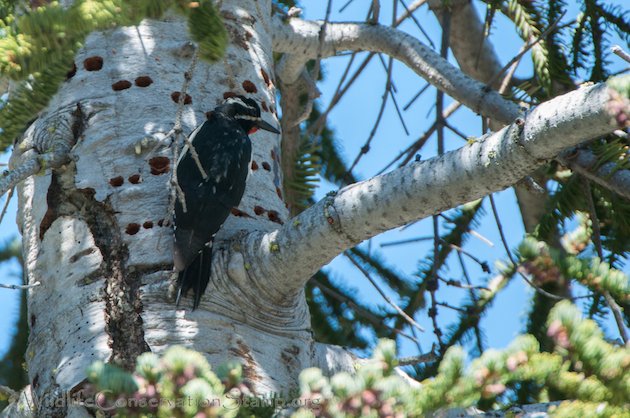
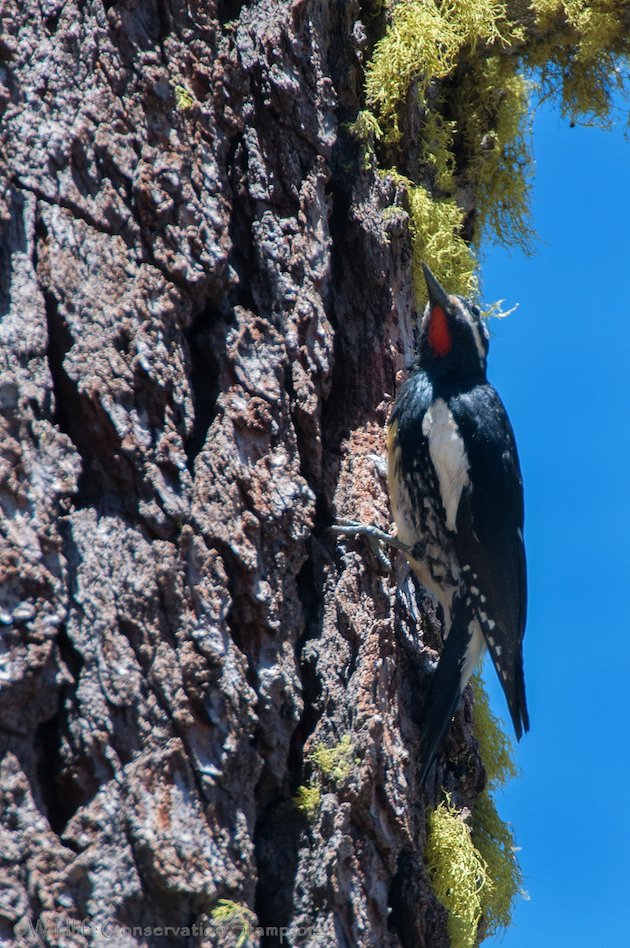
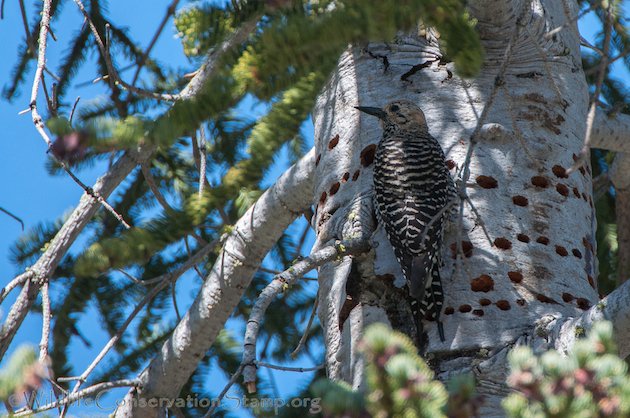
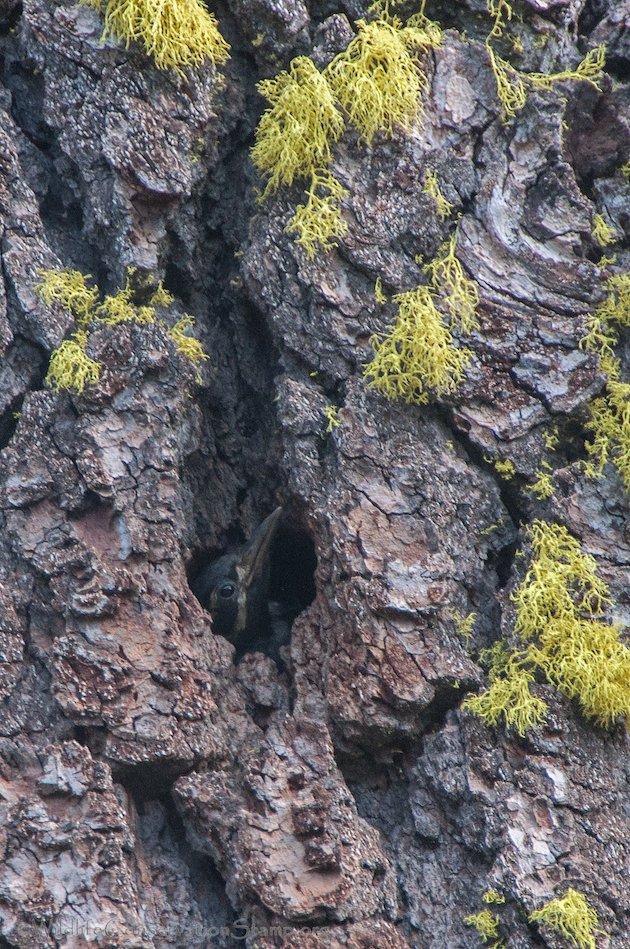











I love the photos!
What fantastic photos of this woodpecker! They are so hard to photograph.